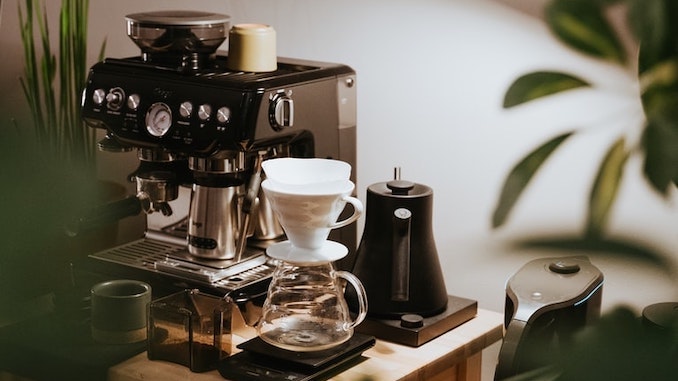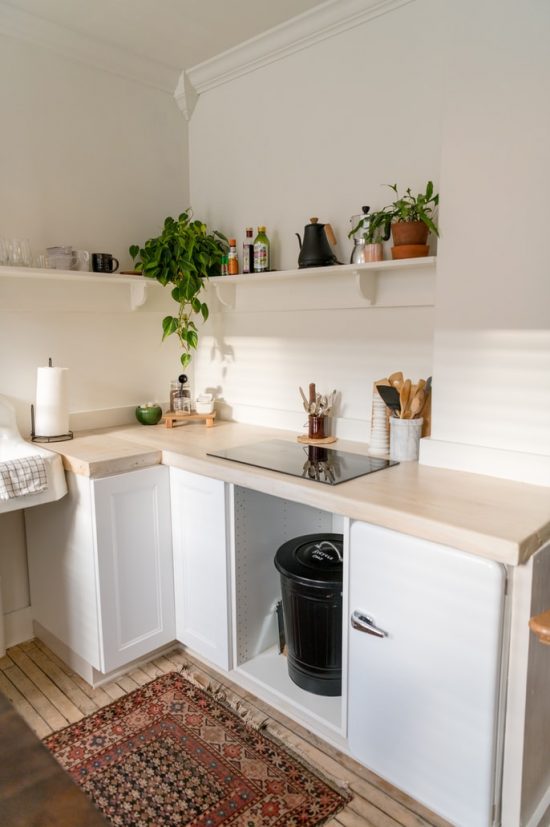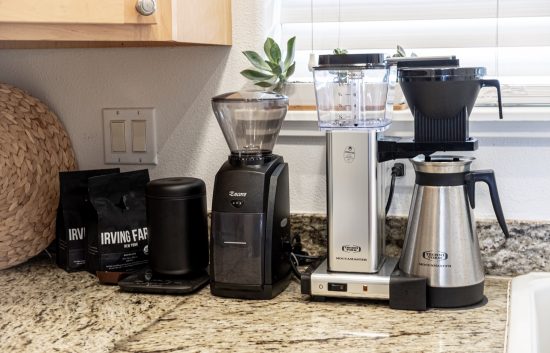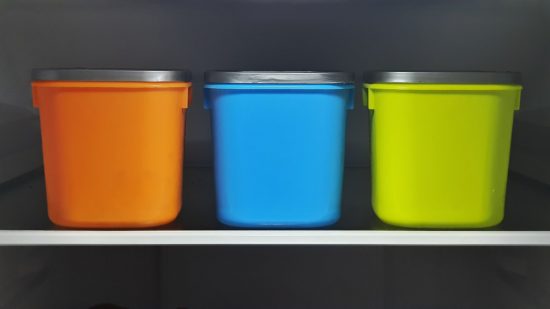
Here are some things to consider when creating your perfect space for brewing coffee at home.
BY TANYA NANETTI
SPECIAL TO BARISTA MAGAZINE ONLINE
Cover sourced from Unsplash
Coffee lovers have their favorite spaces to drink their first brew of the day. Oftentimes, that favorite space is in their own home. Maybe it’s because they’ve got that niche brewer that no coffee shop nearby uses. Or, perhaps it’s the only place where they can drink their coffee exactly as they want with the right soundtrack.
Sometimes, home baristas tend to focus on solely a handful of essential brewing tools without thinking about everything as a whole, from furniture to décor and ambiance. But the truth is that having all the gear does not guarantee a perfect coffee setup. Yet at the same time, there’s not one setup that is ideal for everyone to use.
Here are some things we recommend to begin building your best home coffee setup.

The Furniture
Choosing the perfect furniture for a coffee setup at home is something that is usually an afterthought to the gear. In the beginning, the coffee corner is just a set of randomized coffee tools placed on a spare table. And on that spare table lies a collection of gadgets that burgeoning home brewers have gathered, comparable to the way hobbyists first acquire a new interest. While this is a good start, it’s something that can eventually become chaotic, especially if the table serves multiple purposes.
A nice way to start a functional coffee area is to choose a corner that will be used just for this purpose, and then pick the right table if you have the space. It can be a desk, with drawers to store coffee accessories like repair and cleaning tools, spare parts, and extra filters. However, it can also be a simple, affordable table. In which case, don’t forget to choose fitting boxes to store all these items. Some ideas for those can be former shoe boxes, plastic storage containers, and wooden crates.
Another important factor to consider is the height of that table. It should be both comfortable and ergonomic to tamp an espresso, plunge an AeroPress, or pour a steady stream of water for a pourover. Basically, try to find a table that doesn’t require your elbow to lift above your shoulder, or to slouch your shoulders over significantly to brew.

Coffee and Tools Storage
Together with the table and boxes, you’ll probably want to have more storage spaces for endless coffee gear, bean bags, and décor.
A simple cabinet can hold plenty, but shelves can also be enough. Here you can store more brewers, coffee bags, filters, and books. Having a home coffee setup probably means also having a good amount of coffee around your coffee station. While it’s good to have lots of options, it can also be messy and troublesome for the coffee’s freshness.
Storing Fresh Coffee for Home
First of all, the basics: Coffee should be stored in a cool, dry place. If the coffee comes with a one-way valve, it is already in its perfect container. Just remember to close the pack properly after every use, and remember to finish the coffee quickly enough. In many coffee bars, they use opened coffee bags for just three days. It’s good inspiration to drink that much more good coffee regularly!
If you’ve got many bags around, also remember to store them with the oldest in front, so you can use them first. Or even consider storing whole bean in the freezer—the dehydrating environment of this area is ideal and should give you more time to go through the coffee at your own pace.

The World of Containers
If you prefer to store your open coffee in a container other than the bag it came in, you’ve got tons of options these days. Today, you can find containers with compression seals and vacuum canisters for the opened whole bags, and even specialized bean storage tubes. Once you’ve decided on the canister for you, it’s good to get a label maker handy. Or, opt for labels that will allow you to write over them as you change out beans.
Similar to hoppers, these will get oily, so try to give them a wipe or wash every so often.
We will wrap up this feature tomorrow.
ABOUT THE AUTHOR
Tanya Nanetti (she/her) is a specialty-coffee barista, a traveler, and a dreamer. When she’s not behind the coffee machine (or visiting some hidden corner of the world), she’s busy writing for Coffee Insurrection, a website about specialty coffee that she’s creating along with her boyfriend.

